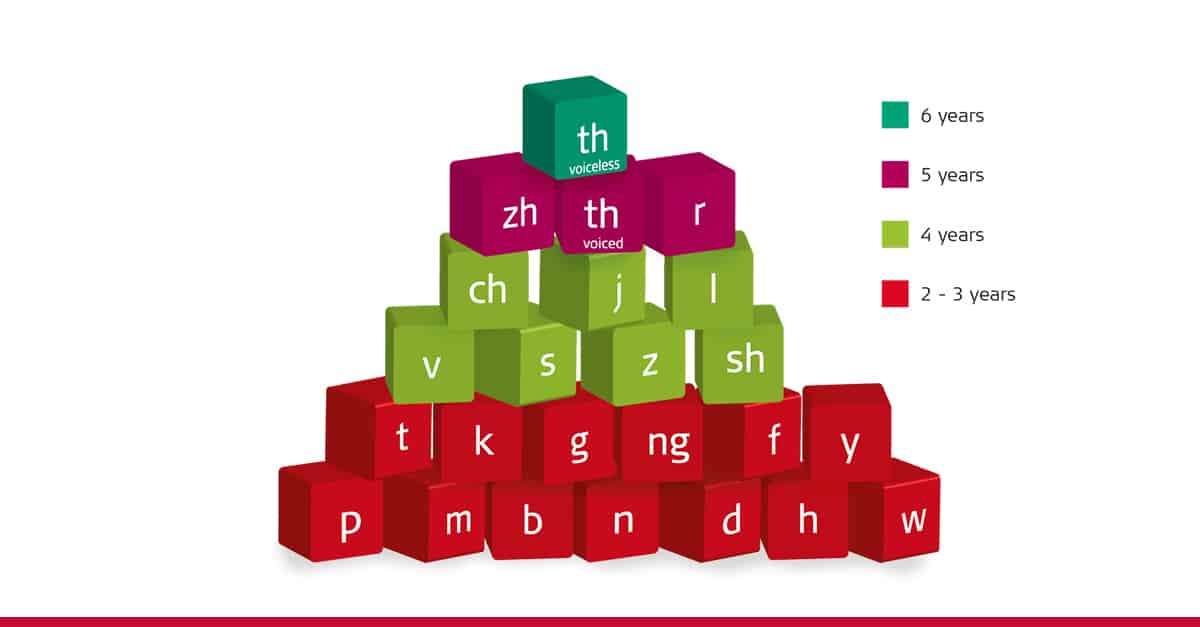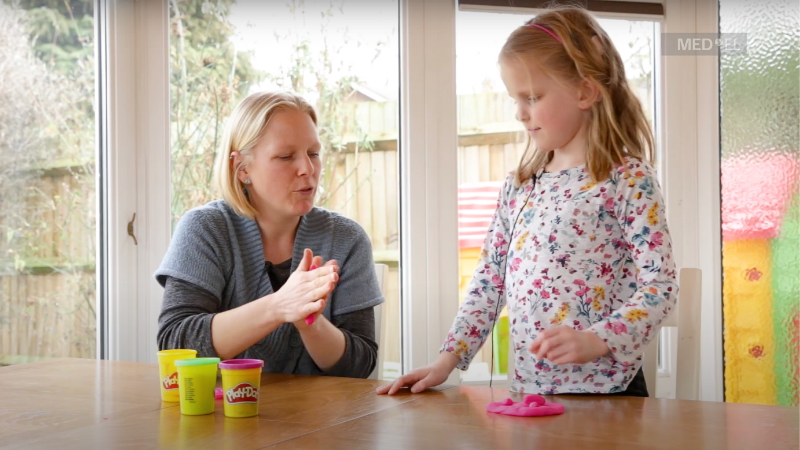
MED-EL
Published Sep 14, 2022
Easy Strategies to Support Speech for School-Aged-Children With Cochlear Implants
Preschool and school-aged children receiving implants may have had some hearing, speech, and language before implantation. But even so, the time after activation is an adjustment period as they hear both new and familiar speech sounds. Here are some strategies caregivers can use to support their preschool and school-aged children to achieve success with their speech.

Sing, Sing, Sing!
Coordinating breath and voice during articulation requires practice, even for children who are beyond the toddler years. Learning how to control the voice to be soft or loud, low pitch or high pitch takes time. Singing is a fun—and more importantly, repetitive—way to develop vocal control. It can also help reduce nasality and improve natural pitch inflection.
Introduce and teach new songs regularly and then gradually allow your child to fill in missing parts of the song with their voice. Start with a single sound. For example, as you sing Old MacDonald’s “ee-eye-ee-eye…,” pause and wait for your child to say “….OH!” With practice over time, they’ll learn to sing the missing words, phrases, or lines from their favorite songs.
Experience Books
Experience books are an engaging and repetitive way to practice many different skills, including speech. Use clippings from magazines, old mail, or drawings to create a picture page that focuses on a single sound. Make the page together with your child to find images that interest them and gain more practice at the same time.
Wait Time
Often children with hearing loss need more time to formulate their own thoughts and express them in sounds or words. As children grow older, they may become aware that speech is difficult for them or become self-conscious of their speech efforts.
Give them time to think about the sounds they want to use. Daily conversation occurs at a rate like a tennis match with a masterful player who hits the ball over the net much faster than you. Your child is still learning to use their voice to communicate, so slow down the pace of the conversation by taking pauses before and after your turn to give them time to think about what they’ve heard and what they’d like to say.
Keep It Simple
Complex speech often involves strings of consonants, known as clusters. These can occur at the beginning (e.g., frog, glue), middle (e.g., butterfly, umbrella), or end of words (e.g., blocks, fruits). Clusters are usually the last sounds to be mastered.
In the first year after activation, focus on having your child produce a wide variety of vowels and early developing consonants, so that they establish a healthy base for building more complex speech.

Use Acoustic Highlighting
Acoustic highlighting is a useful strategy for teaching your child new sounds. Use it to emphasise a particular sound or word to make it stand out from the rest of the sentence. You can do this by changing your tone of voice, using a sing-song quality, saying it louder, softer or more slowly, or pausing slightly beforehand. Using acoustic highlighting will draw your child’s auditory attention to the correct way a sound or word should be produced. Hearing the correct production of sounds and words will help your child to use the correct production later.
Can’t open the video? Watch on Youtube.
Short, But Frequent Practice Sessions
Better speech begins with routine practice. Daily practice for short spans of time (e.g., 10-15 min) is more effective than a long weekly session.
References

MED-EL
Was this article helpful?
Thanks for your feedback.
Sign up for newsletter below for more.
Thanks for your feedback.
Please leave your message below.
Thanks for your message. We will reply as soon as possible.
Send us a message
Field is required
John Doe
Field is required
name@mail.com
Field is required
What do you think?
The content on this website is for general informational purposes only and should not be taken as medical advice. Please contact your doctor or hearing specialist to learn what type of hearing solution is suitable for your specific needs. Not all products, features, or indications shown are approved in all countries.

MED-EL

MED-EL



